Sparse-Dense Subspace Clustering
Shuai Yang,
Wenqi Zhu,
Yuesheng Zhu
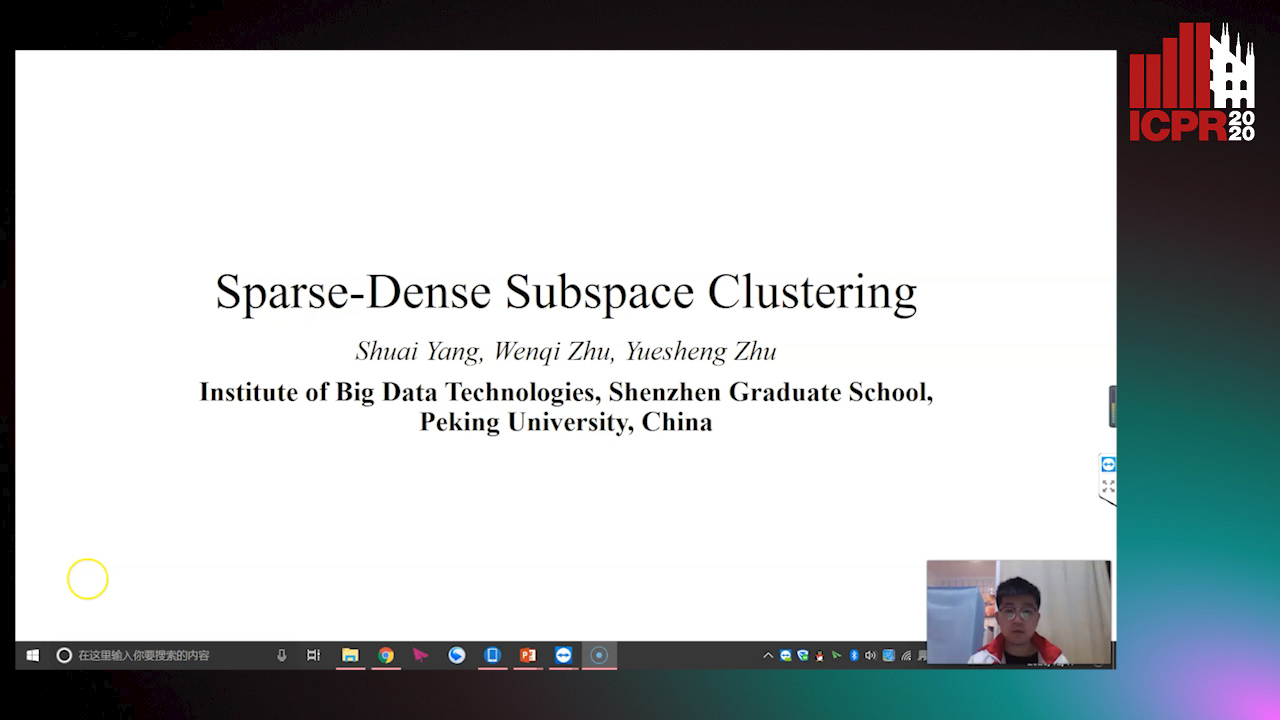
Auto-TLDR; Sparse-Dense Subspace Clustering with Piecewise Correlation Estimation
Similar papers
Fast Subspace Clustering Based on the Kronecker Product
Lei Zhou, Xiao Bai, Liang Zhang, Jun Zhou, Edwin Hancock

Auto-TLDR; Subspace Clustering with Kronecker Product for Large Scale Datasets
Abstract Slides Poster Similar
Scalable Direction-Search-Based Approach to Subspace Clustering

Auto-TLDR; Fast Direction-Search-Based Subspace Clustering
Subspace Clustering Via Joint Unsupervised Feature Selection
Wenhua Dong, Xiaojun Wu, Hui Li, Zhenhua Feng, Josef Kittler

Auto-TLDR; Unsupervised Feature Selection for Subspace Clustering
Subspace Clustering for Action Recognition with Covariance Representations and Temporal Pruning
Giancarlo Paoletti, Jacopo Cavazza, Cigdem Beyan, Alessio Del Bue

Auto-TLDR; Unsupervised Learning for Human Action Recognition from Skeletal Data
A Spectral Clustering on Grassmann Manifold Via Double Low Rank Constraint
Xinglin Piao, Yongli Hu, Junbin Gao, Yanfeng Sun, Xin Yang, Baocai Yin
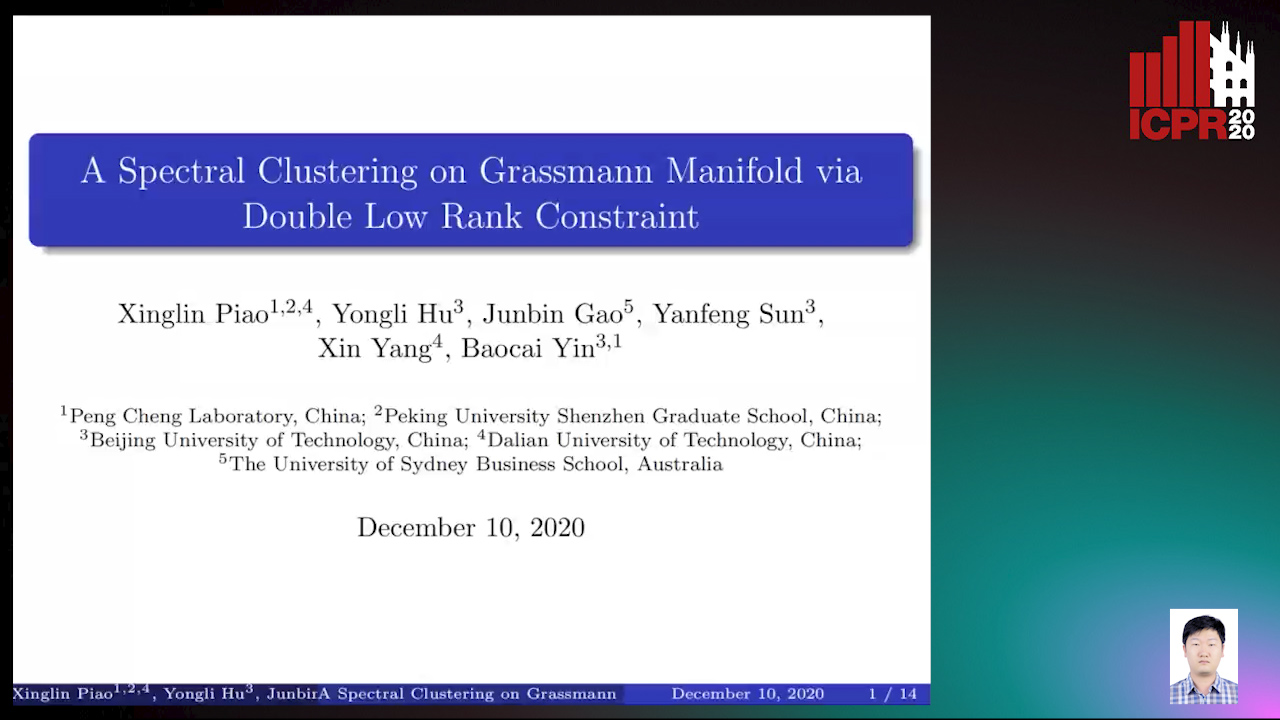
Auto-TLDR; Double Low Rank Representation for High-Dimensional Data Clustering on Grassmann Manifold
Low Rank Representation on Product Grassmann Manifolds for Multi-viewSubspace Clustering
Jipeng Guo, Yanfeng Sun, Junbin Gao, Yongli Hu, Baocai Yin

Auto-TLDR; Low Rank Representation on Product Grassmann Manifold for Multi-View Data Clustering
Abstract Slides Poster Similar
Constrained Spectral Clustering Network with Self-Training
Xinyue Liu, Shichong Yang, Linlin Zong

Auto-TLDR; Constrained Spectral Clustering Network: A Constrained Deep spectral clustering network
Abstract Slides Poster Similar
Double Manifolds Regularized Non-Negative Matrix Factorization for Data Representation
Jipeng Guo, Shuai Yin, Yanfeng Sun, Yongli Hu
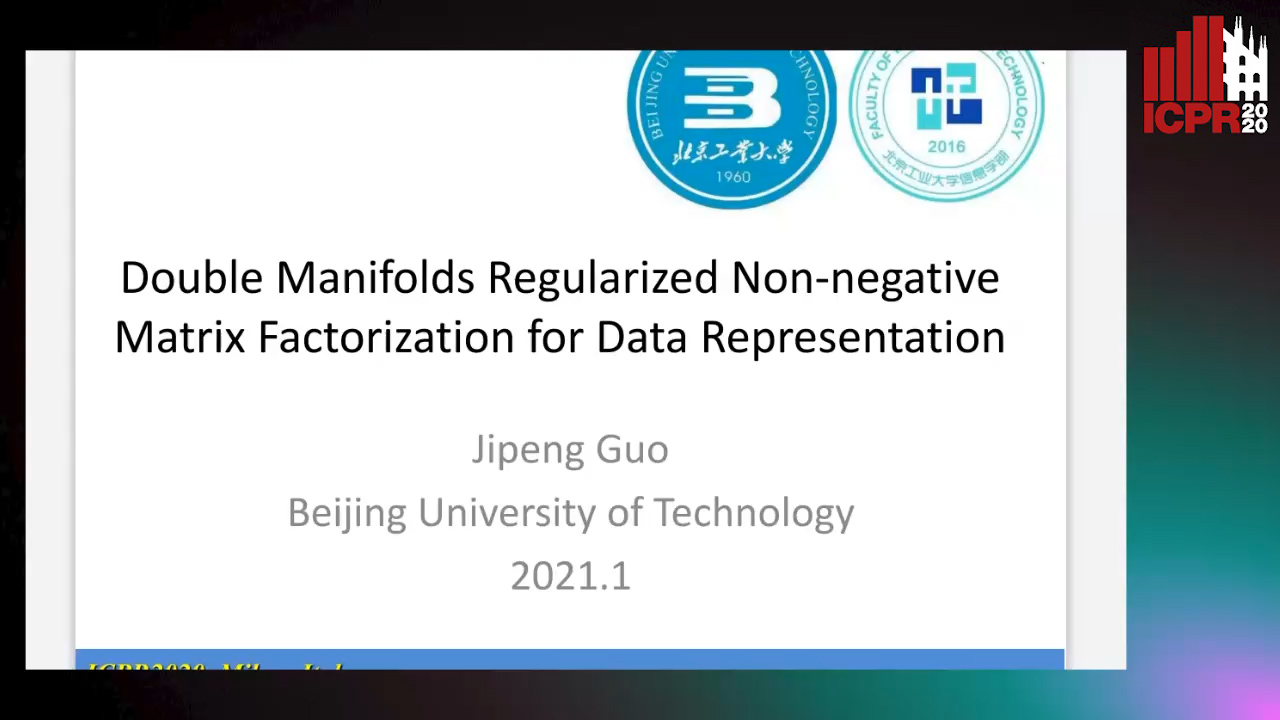
Auto-TLDR; Double Manifolds Regularized Non-negative Matrix Factorization for Clustering
Abstract Slides Poster Similar
Label Self-Adaption Hashing for Image Retrieval
Jianglin Lu, Zhihui Lai, Hailing Wang, Jie Zhou

Auto-TLDR; Label Self-Adaption Hashing for Large-Scale Image Retrieval
Abstract Slides Poster Similar
Graph Spectral Feature Learning for Mixed Data of Categorical and Numerical Type
Saswata Sahoo, Souradip Chakraborty
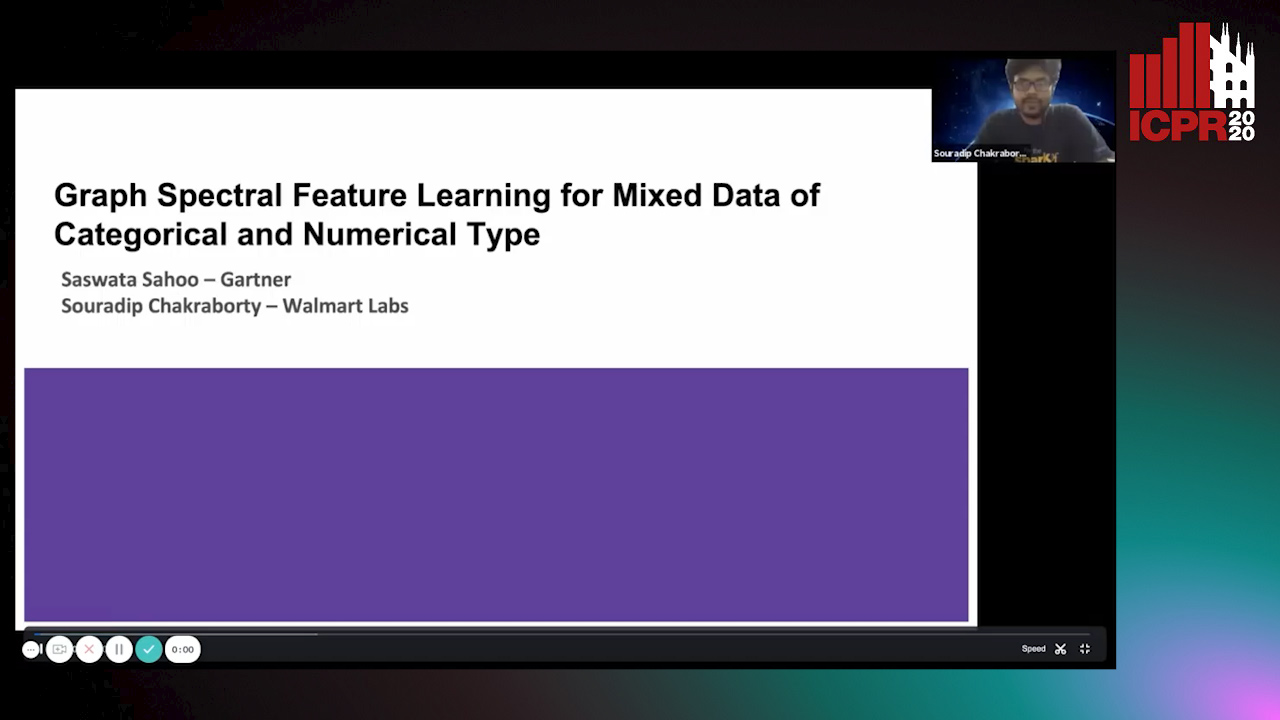
Auto-TLDR; Feature Learning in Mixed Type of Variable by an undirected graph
Abstract Slides Poster Similar
Variational Deep Embedding Clustering by Augmented Mutual Information Maximization
Qiang Ji, Yanfeng Sun, Yongli Hu, Baocai Yin

Auto-TLDR; Clustering by Augmented Mutual Information maximization for Deep Embedding
Abstract Slides Poster Similar
Feature-Aware Unsupervised Learning with Joint Variational Attention and Automatic Clustering
Wang Ru, Lin Li, Peipei Wang, Liu Peiyu

Auto-TLDR; Deep Variational Attention Encoder-Decoder for Clustering
Abstract Slides Poster Similar
Learning Embeddings for Image Clustering: An Empirical Study of Triplet Loss Approaches
Kalun Ho, Janis Keuper, Franz-Josef Pfreundt, Margret Keuper

Auto-TLDR; Clustering Objectives for K-means and Correlation Clustering Using Triplet Loss
Abstract Slides Poster Similar
Motion Segmentation with Pairwise Matches and Unknown Number of Motions
Federica Arrigoni, Tomas Pajdla, Luca Magri

Auto-TLDR; Motion Segmentation using Multi-Modelfitting andpermutation synchronization
Abstract Slides Poster Similar
Sketch-Based Community Detection Via Representative Node Sampling
Mahlagha Sedghi, Andre Beckus, George Atia

Auto-TLDR; Sketch-based Clustering of Community Detection Using a Small Sketch
Abstract Slides Poster Similar
Wasserstein k-Means with Sparse Simplex Projection
Takumi Fukunaga, Hiroyuki Kasai
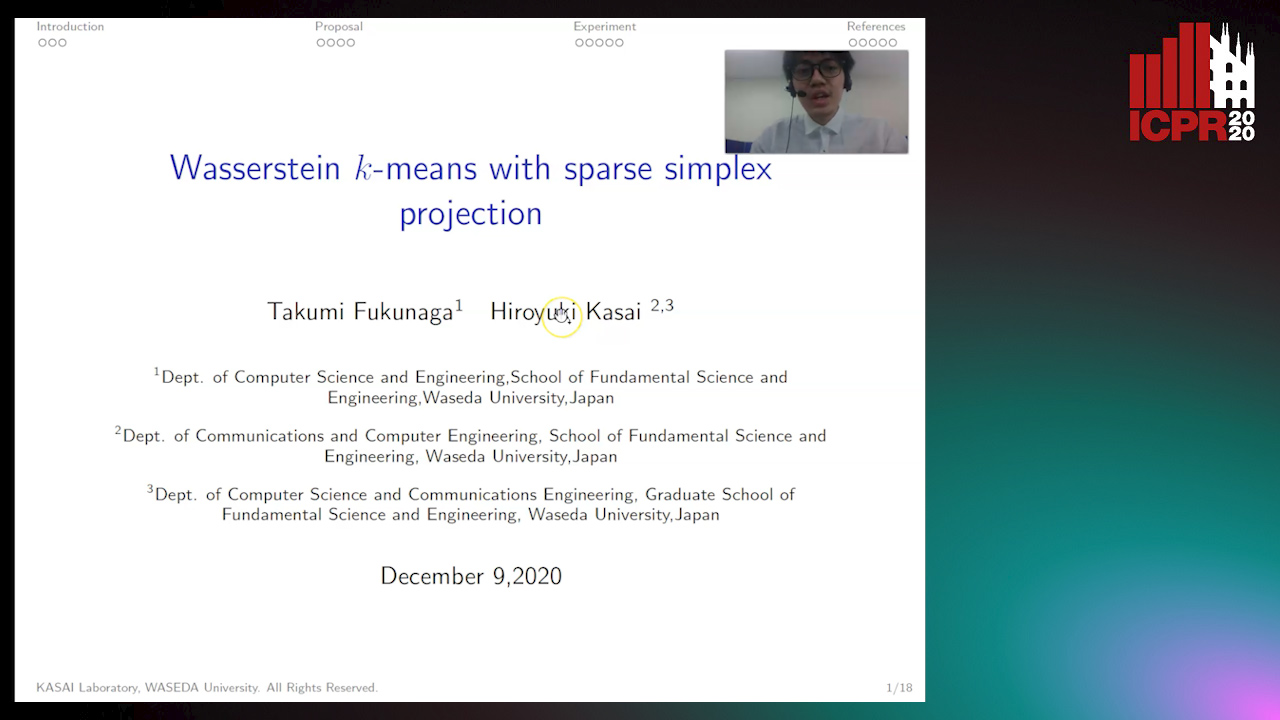
Auto-TLDR; SSPW $k$-means: Sparse Simplex Projection-based Wasserstein $ k$-Means Algorithm
Abstract Slides Poster Similar
Deep Superpixel Cut for Unsupervised Image Segmentation

Auto-TLDR; Deep Superpixel Cut for Deep Unsupervised Image Segmentation
Abstract Slides Poster Similar
JECL: Joint Embedding and Cluster Learning for Image-Text Pairs
Sean Yang, Kuan-Hao Huang, Bill Howe

Auto-TLDR; JECL: Clustering Image-Caption Pairs with Parallel Encoders and Regularized Clusters
A Multi-Task Multi-View Based Multi-Objective Clustering Algorithm
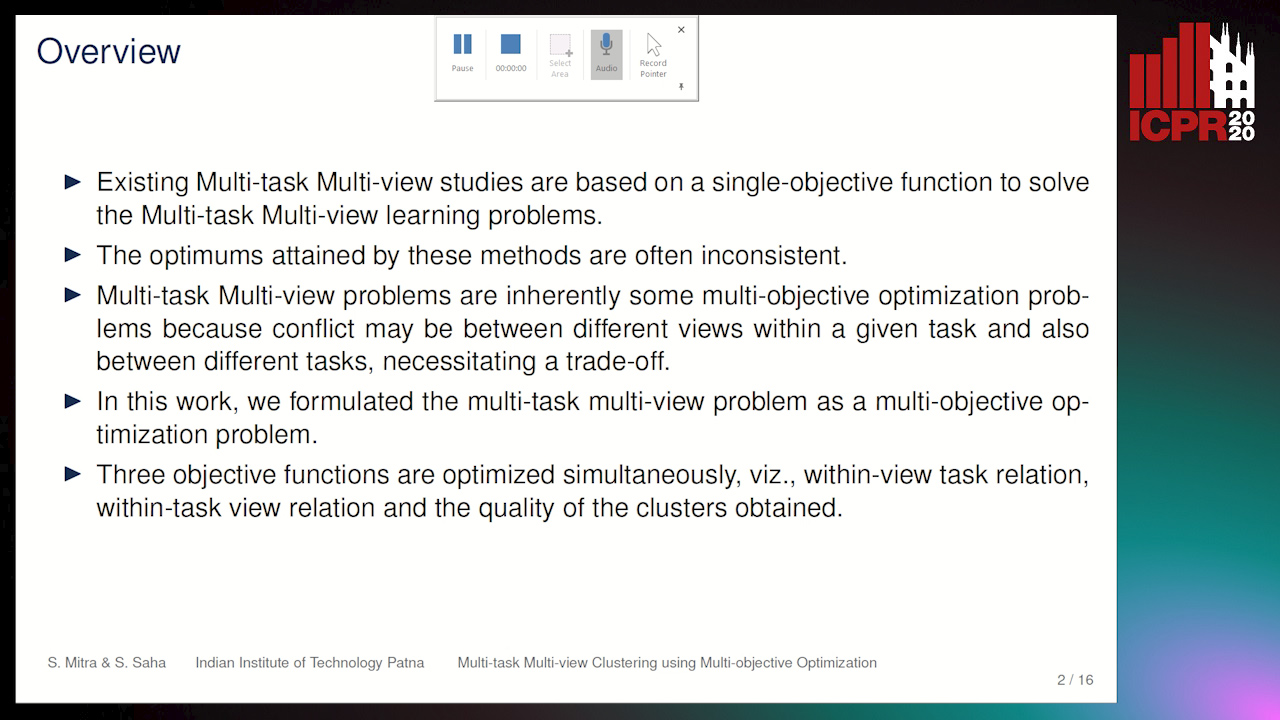
Auto-TLDR; MTMV-MO: Multi-task multi-view multi-objective optimization for multi-task clustering
Abstract Slides Poster Similar
Feature Extraction by Joint Robust Discriminant Analysis and Inter-Class Sparsity

Auto-TLDR; Robust Discriminant Analysis with Feature Selection and Inter-class Sparsity (RDA_FSIS)
Cross-spectrum Face Recognition Using Subspace Projection Hashing
Hanrui Wang, Xingbo Dong, Jin Zhe, Jean-Luc Dugelay, Massimo Tistarelli

Auto-TLDR; Subspace Projection Hashing for Cross-Spectrum Face Recognition
Abstract Slides Poster Similar
Embedding Shared Low-Rank and Feature Correlation for Multi-View Data Analysis
Zhan Wang, Lizhi Wang, Hua Huang

Auto-TLDR; embedding shared low-rank and feature correlation for multi-view data analysis
Abstract Slides Poster Similar
Watermelon: A Novel Feature Selection Method Based on Bayes Error Rate Estimation and a New Interpretation of Feature Relevance and Redundancy

Auto-TLDR; Feature Selection Using Bayes Error Rate Estimation for Dynamic Feature Selection
Abstract Slides Poster Similar
Assortative-Constrained Stochastic Block Models
Daniel Gribel, Thibaut Vidal, Michel Gendreau
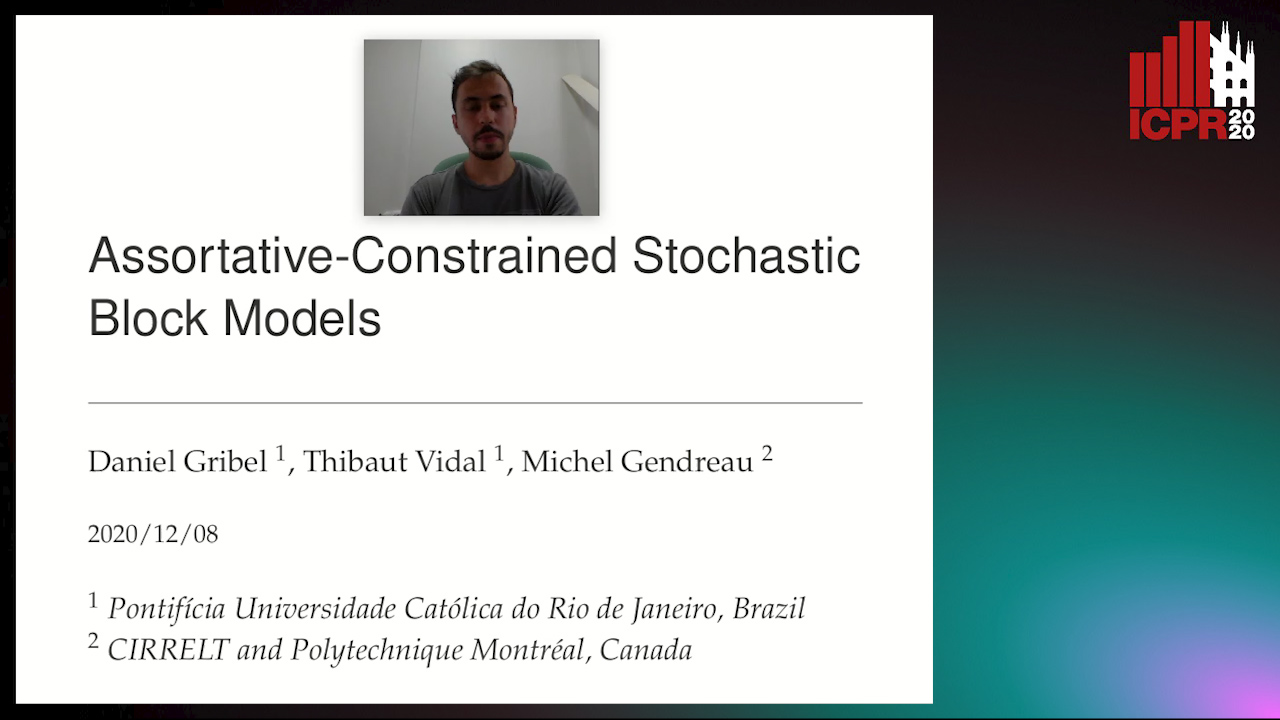
Auto-TLDR; Constrained Stochastic Block Models for Assortative Communities in Neural Networks
Abstract Slides Poster Similar
Classification and Feature Selection Using a Primal-Dual Method and Projections on Structured Constraints
Michel Barlaud, Antonin Chambolle, Jean_Baptiste Caillau

Auto-TLDR; A Constrained Primal-dual Method for Structured Feature Selection on High Dimensional Data
Abstract Slides Poster Similar
N2D: (Not Too) Deep Clustering Via Clustering the Local Manifold of an Autoencoded Embedding
Ryan Mcconville, Raul Santos-Rodriguez, Robert Piechocki, Ian Craddock

Auto-TLDR; Local Manifold Learning for Deep Clustering on Autoencoded Embeddings
Soft Label and Discriminant Embedding Estimation for Semi-Supervised Classification
Fadi Dornaika, Abdullah Baradaaji, Youssof El Traboulsi

Auto-TLDR; Semi-supervised Semi-Supervised Learning for Linear Feature Extraction and Label Propagation
Abstract Slides Poster Similar
Local Clustering with Mean Teacher for Semi-Supervised Learning
Zexi Chen, Benjamin Dutton, Bharathkumar Ramachandra, Tianfu Wu, Ranga Raju Vatsavai

Auto-TLDR; Local Clustering for Semi-supervised Learning
Aggregating Dependent Gaussian Experts in Local Approximation

Auto-TLDR; A novel approach for aggregating the Gaussian experts by detecting strong violations of conditional independence
Abstract Slides Poster Similar
Multi-Modal Deep Clustering: Unsupervised Partitioning of Images

Auto-TLDR; Multi-Modal Deep Clustering for Unlabeled Images
Abstract Slides Poster Similar
Adaptive Matching of Kernel Means

Auto-TLDR; Adaptive Matching of Kernel Means for Knowledge Discovery and Feature Learning
Abstract Slides Poster Similar
Feature Extraction and Selection Via Robust Discriminant Analysis and Class Sparsity

Auto-TLDR; Hybrid Linear Discriminant Embedding for supervised multi-class classification
Abstract Slides Poster Similar
On Learning Random Forests for Random Forest Clustering
Manuele Bicego, Francisco Escolano

Auto-TLDR; Learning Random Forests for Clustering
Abstract Slides Poster Similar
Nonlinear Ranking Loss on Riemannian Potato Embedding
Byung Hyung Kim, Yoonje Suh, Honggu Lee, Sungho Jo

Auto-TLDR; Riemannian Potato for Rank-based Metric Learning
Abstract Slides Poster Similar
Improved Deep Classwise Hashing with Centers Similarity Learning for Image Retrieval

Auto-TLDR; Deep Classwise Hashing for Image Retrieval Using Center Similarity Learning
Abstract Slides Poster Similar
Unveiling Groups of Related Tasks in Multi-Task Learning
Jordan Frecon, Saverio Salzo, Massimiliano Pontil

Auto-TLDR; Continuous Bilevel Optimization for Multi-Task Learning
Abstract Slides Poster Similar
Learning Sign-Constrained Support Vector Machines
Kenya Tajima, Kouhei Tsuchida, Esmeraldo Ronnie Rey Zara, Naoya Ohta, Tsuyoshi Kato

Auto-TLDR; Constrained Sign Constraints for Learning Linear Support Vector Machine
SSDL: Self-Supervised Domain Learning for Improved Face Recognition
Samadhi Poornima Kumarasinghe Wickrama Arachchilage, Ebroul Izquierdo

Auto-TLDR; Self-supervised Domain Learning for Face Recognition in unconstrained environments
Abstract Slides Poster Similar
Learning Stable Deep Predictive Coding Networks with Weight Norm Supervision

Auto-TLDR; Stability of Predictive Coding Network with Weight Norm Supervision
Abstract Slides Poster Similar
Learning Sparse Deep Neural Networks Using Efficient Structured Projections on Convex Constraints for Green AI
Michel Barlaud, Frederic Guyard

Auto-TLDR; Constrained Deep Neural Network with Constrained Splitting Projection
Abstract Slides Poster Similar
A Unified Framework for Distance-Aware Domain Adaptation
Fei Wang, Youdong Ding, Huan Liang, Yuzhen Gao, Wenqi Che

Auto-TLDR; distance-aware domain adaptation
Abstract Slides Poster Similar
Supervised Feature Embedding for Classification by Learning Rank-Based Neighborhoods
Ghazaal Sheikhi, Hakan Altincay

Auto-TLDR; Supervised Feature Embedding with Representation Learning of Rank-based Neighborhoods
Adversarial Encoder-Multi-Task-Decoder for Multi-Stage Processes
Andre Mendes, Julian Togelius, Leandro Dos Santos Coelho

Auto-TLDR; Multi-Task Learning and Semi-Supervised Learning for Multi-Stage Processes
Uniform and Non-Uniform Sampling Methods for Sub-Linear Time K-Means Clustering

Auto-TLDR; Sub-linear Time Clustering with Constant Approximation Ratio for K-Means Problem
Abstract Slides Poster Similar
A Multilinear Sampling Algorithm to Estimate Shapley Values

Auto-TLDR; A sampling method for Shapley values for multilayer Perceptrons
Abstract Slides Poster Similar
Active Sampling for Pairwise Comparisons via Approximate Message Passing and Information Gain Maximization
Aliaksei Mikhailiuk, Clifford Wilmot, Maria Perez-Ortiz, Dingcheng Yue, Rafal Mantiuk

Auto-TLDR; ASAP: An Active Sampling Algorithm for Pairwise Comparison Data
Nearest Neighbor Classification Based on Activation Space of Convolutional Neural Network
Xinbo Ju, Shuo Shao, Huan Long, Weizhe Wang

Auto-TLDR; Convolutional Neural Network with Convex Hull Based Classifier
Supervised Domain Adaptation Using Graph Embedding
Lukas Hedegaard, Omar Ali Sheikh-Omar, Alexandros Iosifidis

Auto-TLDR; Domain Adaptation from the Perspective of Multi-view Graph Embedding and Dimensionality Reduction
Abstract Slides Poster Similar